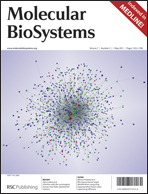For many infectious agents, the detection of antibodies is critical for diagnosing, monitoring and understanding vaccine responses. To facilitate the highly quantitative and simultaneous analysis of antibodies against multiple proteins from infectious agents, we have developed Luciferase Immunoprecipitation Systems (LIPS) arrays. By configuring microtiter plates with multiple antigens and testing control and infected serum samples at one time in solution, LIPS arrays provided highly reproducible antibody titers to panels of antigens with a wide dynamic range of detection. While all serum samples showed similar positive and negative immunoreactivity with internal control antigens derived from Influenza and Renillaluciferase-alone protein, respectively, antibody titers to many HCV and HIV antigens were generally 10 to over 400-fold higher in the infected versus uninfected samples. Additional screening of 18 proteins from the EBV proteome with serum samples from healthy EBV-infected individuals showed statistically significant antibody titers to 50% of the proteins tested. Antibody titers for the different EBV antigens in the healthy EBV-infected individuals were markedly heterogeneous highlighting the complexity of host humoral responses. These results suggest that LIPS arrays offer a highly discriminating platform for simultaneously profiling a wide spectrum of antibodies associated with many infectious agents.

You have access to this article
 Please wait while we load your content...
Something went wrong. Try again?
Please wait while we load your content...
Something went wrong. Try again?


 Please wait while we load your content...
Please wait while we load your content...